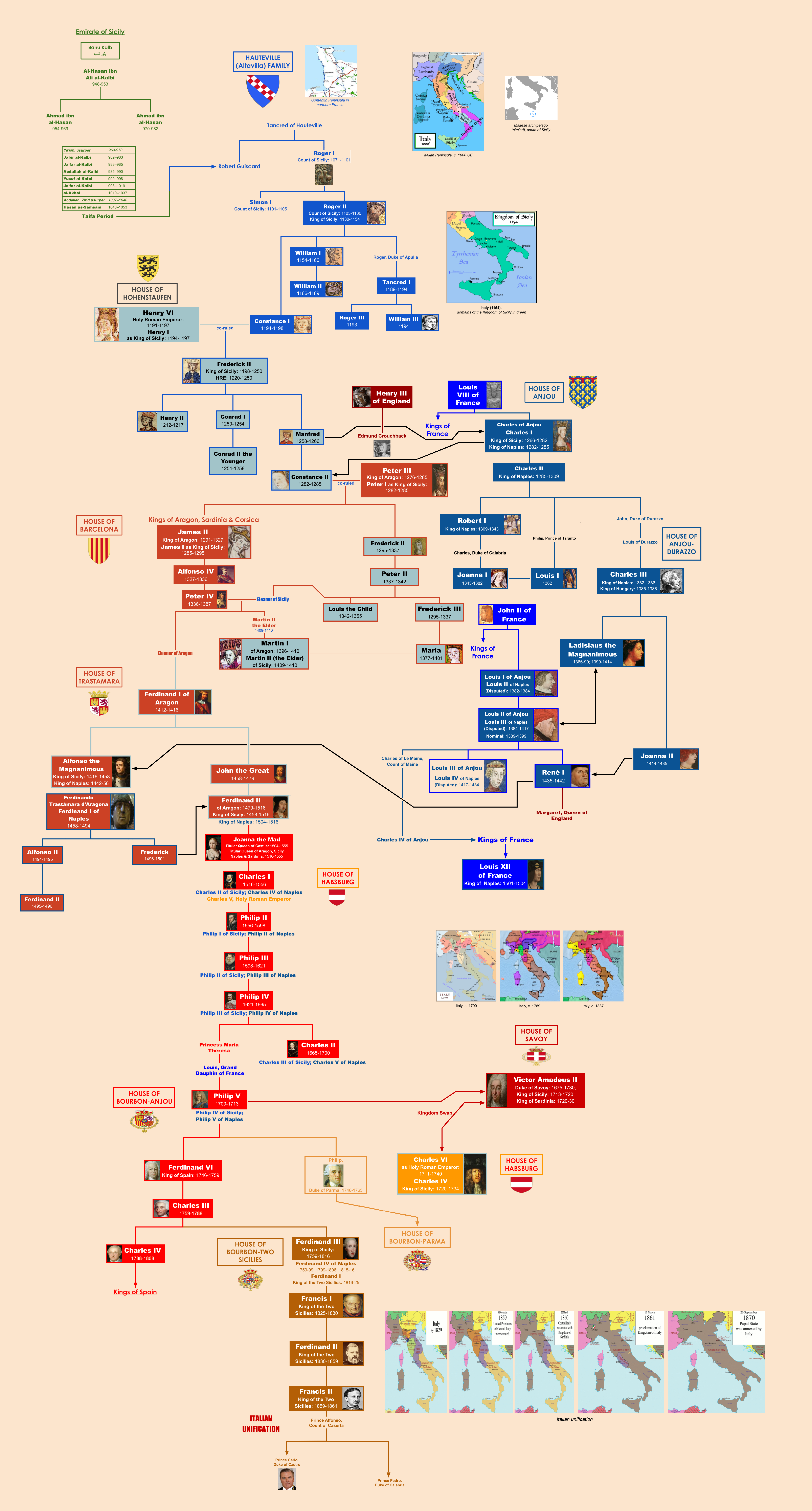HOME | DD
 BenjiSkyler — Monarchs of Sicily and Naples
BenjiSkyler — Monarchs of Sicily and Naples

#chart #diagram #italy #medievalkingsandqueens #house_of_bourbon #kingdom_of_the_two_sicilies #house_of_hauteville #house_of_bourbon_two_sicilies #europeanhistory #familytree #history #naples #sicily
Published: 2023-05-08 21:19:48 +0000 UTC; Views: 1927; Favourites: 5; Downloads: 12
Redirect to original
Description
The Sicilian monarchy and royal family date back to the Norman conquest of southern Italy in the 11th and 12th centuries. Sicily had previously been an Arab emirate under the governorship of the Kalbids (or Banu Kalb). The lasting legacy of the Arab presence in the central Mediterranean is the Maltese language , partially derived from a Sicilian dialect of Arabic.Dynastic conflict within the Kalbid dynasty led to its decline, leaving the island open to invasion from neighboring powers. The Hautevilles, a Norman family originating from Contenin peninsula of northern France established a feudal county. Their conquest of the island of Sicily, as well as the nearby Maltese archipelago and the southern third of mainland Italy was completed in 1091. The House of Hauteville ruled as counts and eventually as kings starting in 1130. Though the Holy Roman Emperor Henry VI may have been crowned King of Sicily, he is regarded as a pretender. He was captured and executed, but his descendants would rule another 69 years. Manfred, the last Hohenstaufen ruler fought to retain his kingdom when it was declared a papal possession. Sicily was first granted to a younger son of the King of England, who failed to capture the island, and then to a younger brother of the King of France. Charles of Anjou captured Sicily and became its king in 1266, but Manfred's son-in-law, King Peter III of Aragon conquered the island in 1282. Charles and his descendants from that point on were Kings of Naples. The southern portion of the peninsula would only informally be known as the Kingdom of Naples, but still known as the Kingdom of Sicily, hence the later term Kingdom of the Two Sicilies.
Naples remained under the rule of the House of Anjou, eventually renamed House of Anjou-Durrazo when a new line French Angevin rulers attempted to lay claim when Joanna II had no heirs. She bequeathed the kingdom to a great-grandson of John II of France, but Louis pre-deceased her and Naples passed to his brother upon Joanna's death. King Alfonso V of Aragon had previously been appointed Joanna's heir, and so refusing to be disinherited, he conquered Naples for himself. By this time, Sicily had also become part of the Crown of Aragon with the junior of Sicilian kings having died out.
Sicily and Naples would remain under the rule of Aragon and the unified Spanish crown until the War of the Spanish Succession. In reward for his support of the Habsburg claimant to the Spanish throne, Victor Amadeus II of Savoy was granted Sicily. The Spanish would once again invade Sicily shortly afterwards. Under the Treaty of the Hague, the House of Savoy was given Sardinia while the Holy Roman Emperor took Sicily for himself. Sicily and Naples were again successfully conquered by the Spanish during the War of the Polish Succession and were ruled by a junior branch of the Spanish Bourbons until Italian unification .
See also:
Spanish Bourbon Monarchs
House of Bourbon
House of Savoy
Kings of Modern Italy
























